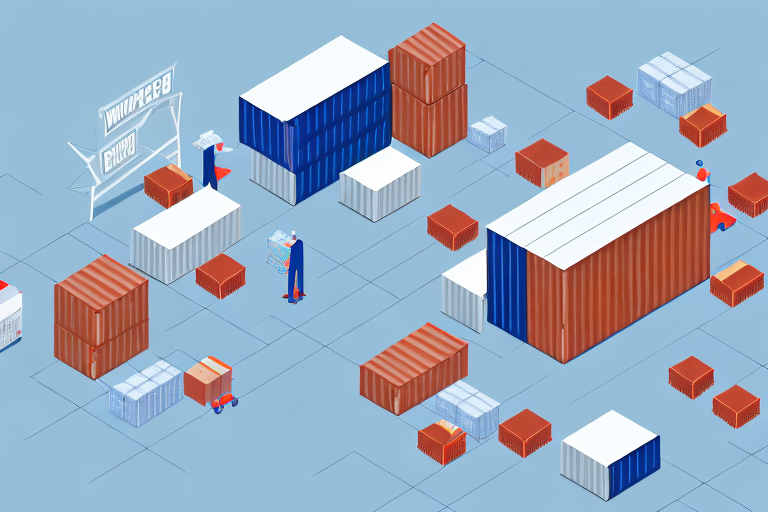Optimizing the Shipping Process in Your Warehouse
Efficient shipping is a cornerstone of successful warehouse operations and overall business performance. Shipping delays, errors, and inefficiencies can negatively impact customer satisfaction, inventory management, and profitability. To ensure smooth operations, it's essential to analyze and eliminate bottlenecks, streamline warehouse layouts, and automate repetitive tasks.
Importance of Efficient Shipping for Business Success
As businesses scale, maintaining an efficient shipping process becomes increasingly challenging yet crucial. Optimizing shipping can lead to reduced shipping costs, improved delivery times, and minimized errors, all of which contribute to enhanced customer satisfaction and loyalty. According to the National Retail Federation, efficient shipping processes significantly boost a company's reputation and contribute to long-term success.
Faster delivery times are now a customer expectation, with over 80% of consumers valuing quick shipping when making online purchases (PwC, 2023). By streamlining shipping processes, businesses can meet these expectations, leading to increased sales and higher customer retention rates.
Identifying and Eliminating Bottlenecks in Your Shipping Process
Analyzing Shipping Data and Workflow
To streamline the shipping process, it's essential to first identify areas causing delays or inefficiencies. Analyzing past shipping data, observing current workflows, and interviewing staff can highlight common bottlenecks such as poor inventory management, inadequate staffing, or outdated technology.
Process Mapping
Using process mapping techniques allows businesses to create a visual representation of the shipping process, identifying each step, responsible parties, and time taken. This helps pinpoint specific areas requiring improvement, such as unnecessary steps or delays in handoffs.
Incorporating Customer Feedback
Customer feedback is a valuable source of information on shipping performance. Consistent complaints about late deliveries or damaged goods can indicate underlying issues in the shipping process that need to be addressed to improve service quality.
Leveraging Technology to Automate Shipping
Shipping and Order Management Systems
Implementing advanced shipping software can automate repetitive tasks, reduce manual errors, and expedite the shipping process. Systems that integrate order and shipping management enhance efficiency and provide real-time tracking information. Platforms like ShipBob offer comprehensive solutions for order fulfillment and shipping automation.
Barcode and RFID Technology
Barcoding and RFID (Radio Frequency Identification) technologies significantly enhance inventory tracking and accuracy. According to RFID Journal, RFID can increase inventory accuracy by up to 95%, reducing errors and improving order fulfillment rates.
Automated Conveyor Systems and Robotics
Automated conveyor systems and robotics can streamline the movement of products within the warehouse, reducing the need for manual labor and increasing throughput. Companies like Amazon have successfully integrated robotics into their warehouses, achieving significant gains in efficiency and scalability (Amazon Robotics).
Optimizing Warehouse Layout for Enhanced Shipping Efficiency
Strategic Product Placement
Organizing the warehouse layout to place frequently shipped items closer together can minimize the time spent searching for products and reduce travel distances for staff. Implementing the ABC analysis method helps prioritize inventory based on shipping frequency and sales volume.
Cross-Docking Systems
Adopting a cross-docking approach involves unloading incoming shipments and directly loading them onto outbound trucks without storing them in the warehouse. This method reduces handling time and storage space requirements but requires precise coordination with suppliers and carriers.
Ensuring Safety and Efficiency
A well-organized warehouse layout must also prioritize safety by maintaining clear pathways for equipment, providing adequate training for staff, and implementing safety protocols for handling hazardous materials. This not only prevents accidents but also maintains a productive workflow.
Effective Inventory Management for Improved Shipping
Accurate Inventory Tracking
Efficient inventory management ensures that products are available when needed, reducing the risk of stockouts and overstocking. Real-time inventory tracking systems allow businesses to monitor stock levels accurately and forecast demand effectively.
Demand Forecasting
Using data analytics to predict future demand helps in maintaining optimal inventory levels. Accurate forecasting minimizes excess inventory costs and ensures that popular products are readily available for shipment.
Integration with Shipping Processes
Integrating inventory management with shipping processes enhances overall efficiency by ensuring that inventory data is up-to-date and synchronized with order fulfillment activities.
Training and Developing Warehouse Staff
Best Practices and Procedures
Training warehouse staff on inventory management, shipping procedures, and product handling is essential for maintaining efficiency and reducing errors. Well-trained staff can perform tasks more quickly and accurately, contributing to smoother shipping operations.
Safety Training
Ensuring that staff are trained in safety protocols reduces the risk of accidents and injuries. Safety training includes proper equipment usage, handling of hazardous materials, and adherence to workplace safety standards.
Continuous Development
Ongoing training and professional development keep staff updated with the latest industry trends and technologies, ensuring that the warehouse remains competitive and adaptable to changes in the market.
Analyzing Performance Metrics and Reducing Costs
Key Performance Indicators (KPIs)
Monitoring KPIs such as order processing time, delivery accuracy, and shipping costs provides insights into the efficiency of the shipping process. Regular analysis of these metrics helps identify areas for improvement and track the impact of optimization efforts.
Lean Six Sigma Principles
Applying Lean Six Sigma methodologies can streamline shipping processes by eliminating waste and reducing variability. This approach leads to more efficient workflows and significant cost savings.
Cost Reduction Strategies
Negotiating better rates with carriers, optimizing packaging materials, and streamlining delivery routes are effective strategies for reducing shipping costs. Automation can also lower labor costs by reducing the need for manual intervention.
Enhancing Customer Experience through Shipping Excellence
Accurate and timely shipping directly impacts customer satisfaction and retention. Efficient shipping ensures that products reach customers on time and in good condition, fostering trust and loyalty. On the contrary, shipping delays and errors can lead to negative reviews and loss of business. By optimizing the shipping process, businesses can enhance the overall customer experience and build a strong market reputation.
Case Study: Optimizing Shipping Processes for Success
In 2019, Company X, an e-commerce retailer specializing in electronics, faced challenges with shipping delays, errors, and high costs. Through comprehensive data analysis and process mapping, Company X identified bottlenecks in warehouse layout and inventory management. By implementing a new inventory management system, automating shipping processes, and negotiating better carrier rates, Company X achieved a 20% reduction in shipping costs, improved delivery times, and increased customer satisfaction.
Future Trends in Shipping Optimization
The logistics and shipping industry is rapidly evolving, with emerging trends shaping the future of shipping optimization. Key trends include the integration of artificial intelligence and machine learning for predictive analytics, the use of drones and autonomous vehicles for last-mile delivery, and the expansion of cross-border e-commerce. Adopting these technologies enables businesses to enhance efficiency, reduce costs, and stay competitive in a dynamic market.






















